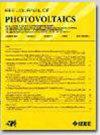基于谐波最大似然估计的电力系统分布式光伏发电托管容量评估新方法
IF 2.6
3区 工程技术
Q3 ENERGY & FUELS
引用次数: 0
摘要
充分表征分布式光伏并网谐波注入量,将谐波约束与其他约束相结合,准确评估光伏并网承载能力,对保证配电网安全稳定运行具有重要意义。为此,本文提出了一种基于谐波最大似然估计(MLE)的分布式光伏并网容量评估方法。首先,利用MLE方法的似然函数,对分布式光伏注入的谐波参数进行了最优估计,从而能够准确评估光伏并网过程中的谐波输出。在此基础上,设计了一种谐波分配方法;它表征了并网系统中节点之间的连接程度,并将配电网划分为区域。有效减少了主机容量估算中的场景数。最后,与传统的承载能力进行了比较。本文提出的评估方法考虑了实际分布式光伏并网系统中的谐波接入。建立了一种基于谐波注入量的改进谐波分配方法。对该地区光伏主机容量的评估确保了准确性并减少了计算时间。为配电网的接入容量提供参考。本文章由计算机程序翻译,如有差异,请以英文原文为准。
A Novel Hosting Capacity Evaluation Method for Distributed PV Connected in Power System Based on Maximum Likelihood Estimation of Harmonic
Methods for fully characterizing the harmonic injection amount of distributed photovoltaic grid connection and combining harmonic constraints with other constraints to accurately evaluate the hosting capacity of photovoltaic integration into distribution networks are of great significance as they ensure the safe and stable operation of distribution networks. Therefore, a novel hosting capacity evaluation method for distributed photovoltaics (PVs) connected in a power system based on the maximum likelihood estimation of harmonics (MLE) is proposed in this study. First, using the likelihood function from the MLE method, the harmonic parameters of distributed photovoltaic injections are optimally estimated, allowing for the accurate assessment of harmonic outputs during photovoltaic grid connections. Furthermore, a harmonic partitioning method is devised; it characterizes the connection degree between nodes in the grid-connected system, and it divides the distribution network into regions. The scenario number in the estimation of hosting capacities is effectively reduced. Finally, a comparison is carried out relative to the conventional hosting capacity. The assessment method proposed in this study considers the harmonic access in the actual distributed PV grid-connected system. An improved harmonic partitioning method is established based on the harmonic injection amount. The evaluation of PV hosting capacities in the region ensures accuracy and reduces calculation times. They provide references for the access capacity of the distribution network.
求助全文
通过发布文献求助,成功后即可免费获取论文全文。
去求助
来源期刊

IEEE Journal of Photovoltaics
ENERGY & FUELS-MATERIALS SCIENCE, MULTIDISCIPLINARY
CiteScore
7.00
自引率
10.00%
发文量
206
期刊介绍:
The IEEE Journal of Photovoltaics is a peer-reviewed, archival publication reporting original and significant research results that advance the field of photovoltaics (PV). The PV field is diverse in its science base ranging from semiconductor and PV device physics to optics and the materials sciences. The journal publishes articles that connect this science base to PV science and technology. The intent is to publish original research results that are of primary interest to the photovoltaic specialist. The scope of the IEEE J. Photovoltaics incorporates: fundamentals and new concepts of PV conversion, including those based on nanostructured materials, low-dimensional physics, multiple charge generation, up/down converters, thermophotovoltaics, hot-carrier effects, plasmonics, metamorphic materials, luminescent concentrators, and rectennas; Si-based PV, including new cell designs, crystalline and non-crystalline Si, passivation, characterization and Si crystal growth; polycrystalline, amorphous and crystalline thin-film solar cell materials, including PV structures and solar cells based on II-VI, chalcopyrite, Si and other thin film absorbers; III-V PV materials, heterostructures, multijunction devices and concentrator PV; optics for light trapping, reflection control and concentration; organic PV including polymer, hybrid and dye sensitized solar cells; space PV including cell materials and PV devices, defects and reliability, environmental effects and protective materials; PV modeling and characterization methods; and other aspects of PV, including modules, power conditioning, inverters, balance-of-systems components, monitoring, analyses and simulations, and supporting PV module standards and measurements. Tutorial and review papers on these subjects are also published and occasionally special issues are published to treat particular areas in more depth and breadth.
 求助内容:
求助内容: 应助结果提醒方式:
应助结果提醒方式:


